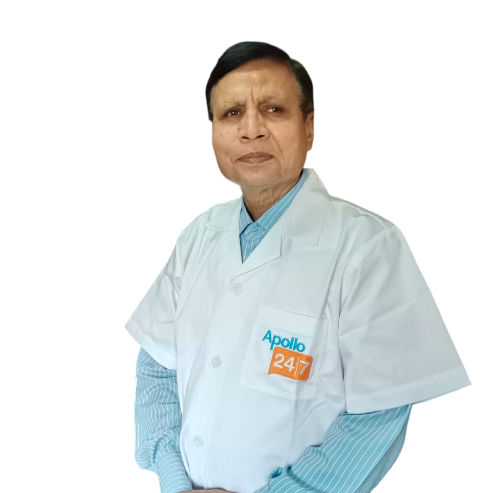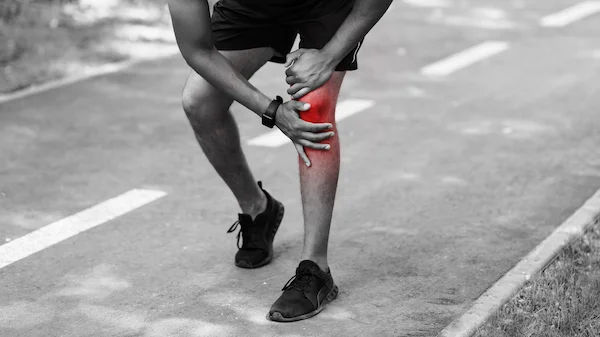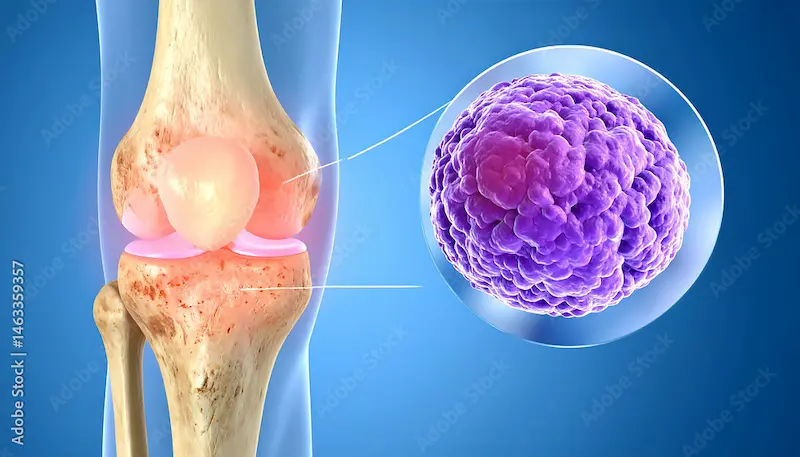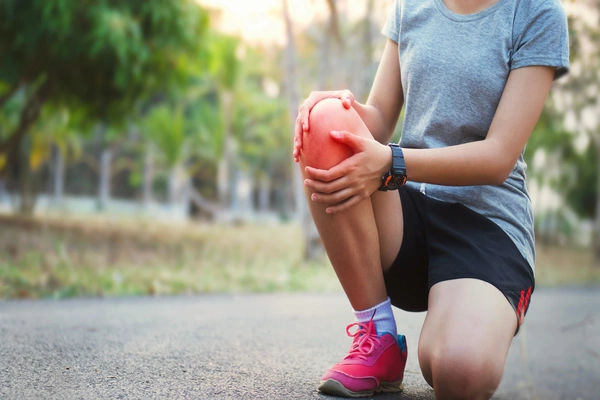Your Guide to Non-Surgical Knee Osteoarthritis Pain Relief
Discover effective non-surgical treatments for knee osteoarthritis. Learn about lifestyle changes, exercises, medications, injections, and advanced therapies to relieve pain and regain an active life without surgery.

Written by Dr. Mohammed Kamran
Reviewed by Dr. Rohinipriyanka Pondugula MBBS
Last updated on 17th Sep, 2025

Introduction
Living with knee osteoarthritis can feel like a constant battle against stiffness, ache, and a loss of freedom. That sharp twinge when you stand up or the deep throb after a walk is your body signaling that the protective cartilage in your knee has worn down. But before you resign yourself to a future of pain or consider drastic measures, it's crucial to know that a vast world of non-surgical pain relief options exists. This comprehensive guide is designed to empower you with knowledge and practical strategies. We will explore everything from simple lifestyle adjustments and targeted exercises to advanced medical interventions that can significantly reduce your knee discomfort, improve your mobility, and help you reclaim an active life without going under the knife.
Understanding Knee Osteoarthritis: The Root of the Pain
Knee osteoarthritis (OA) isn't just "wear and tear"; it's a complex degenerative joint disease where the smooth, slippery cartilage that cushions the ends of your bones gradually erodes. This leads to pain, swelling, and difficulty moving the joint. Understanding the mechanics is the first step toward effective management.
What Exactly is Happening in Your Knee?
Think of your knee cartilage as a shock absorber. In OA, this shock absorber breaks down, becoming frayed and rough. The space between the bones narrows, and in advanced cases, bone can rub on bone. This process triggers inflammation in the joint lining (synovium), which causes further pain and swelling. It's a cycle of mechanical stress and inflammatory response that defines the osteoarthritis experience.
Common Symptoms Beyond Just Ache
While pain is the hallmark symptom, knee OA presents in other ways:
- Stiffness: Especially first thing in the morning or after sitting for a long time.
- Swelling: Caused by inflammation or extra bone growth (bone spurs).
- Loss of Flexibility: You may not be able to bend or straighten your knee fully.
- Grating Sensation: You might hear or feel a creaking, cracking, or popping sound (crepitus).
- Instability: A feeling that your knee might "give way."
Consult an Orthopaedist or Rheumatologist for the best advice
Lifestyle Modifications: Your First Line of Defence
The most effective strategies for managing knee OA are often the ones you can start today. These foundational changes address the core factors that contribute to joint stress.
The Power of Weight Management
This is the single most impactful non-surgical treatment for knee OA. Every pound of body weight exerts about four pounds of pressure on your knees. Losing just 10 pounds can reduce the load on your knees by 40 pounds with each step. This dramatically decreases pain and can slow the progression of the disease. Focus on a balanced diet rich in anti-inflammatory foods like leafy greens, fatty fish, and berries.
Low-Impact Exercise is Non-Negotiable
It may seem counterintuitive, but movement is medicine for arthritis. Resting too much weakens the muscles that support your knee, worsening the problem. The key is choosing joint-friendly activities.
Best Exercises for Knee OA:
- Swimming and Water Aerobics: The buoyancy of water supports your weight, allowing for pain-free movement and strengthening.
- Cycling (Stationary or Outdoor): Builds quadriceps and hamstring strength with minimal joint impact.
Elliptical Trainer: Provides a great cardiovascular workout that mimics walking without the pounding. - Tai Chi: This gentle martial art improves balance, flexibility, and strength through slow, flowing movements.
Exercises to Avoid:
High-impact activities like running, jumping, basketball, and sports that involve sudden stops and pivots can exacerbate knee pain and accelerate cartilage breakdown.
Physical Therapy and Targeted Exercises
A physical therapist (PT) is an invaluable ally in your fight against knee pain. They provide a personalised plan that you can't get from a generic online article.
How a Physical Therapist Can Help
A PT will assess your gait, strength, and range of motion to identify specific weaknesses and imbalances. They will then design a custom program to:
- Strengthen the muscles around your knee (quadriceps, hamstrings, glutes) to act as a natural brace.
Improve your flexibility to reduce stiffness. - Teach you proper body mechanics for daily activities to protect your joints.
- Use modalities like ultrasound or electrical stimulation for pain relief.
Key Exercises to Strengthen and Support
While a PT will give you specific exercises, some common, safe ones include:
- Straight Leg Raises: Strengthen your quadriceps without bending the knee.
- Hamstring Curls: Build support at the back of the knee.
- Calf Raises: Improve stability.
- Heel Slides: Gently improve range of motion.
Over-the-Counter and Topical Pain Relief
For many, medications provide the necessary bridge to stay active while working on long-term solutions.
Oral Medications: NSAIDs and Acetaminophen
Acetaminophen (e.g., Tylenol): Effective for mild to moderate pain but does not reduce inflammation.
Nonsteroidal Anti-Inflammatory Drugs (NSAIDs) like Ibuprofen (Advil, Motrin) or Naproxen (Aleve) are often more effective for knee osteoarthritis as they tackle both pain and inflammation. Important: Long-term use of NSAIDs can have side effects; always consult a doctor for guidance.
Creams, Gels, and Patches
Topical treatments are excellent options as they deliver medicine directly to the painful joint with minimal systemic side effects.
- NSAID Gels (e.g., Voltaren Gel): Now available over-the-counter, these are a first-line recommendation.
- Capsaicin Cream: Derived from chili peppers, it works by depleting a chemical that helps transmit pain signals.
- Menthol-based Creams: Provide a cooling sensation that can distract from pain.
Medical Interventions: Beyond the Pharmacy Shelf
When conservative measures aren't enough, doctors can offer in-office procedures.
Corticosteroid Injections: Rapid Relief
A corticosteroid (a powerful anti-inflammatory medicine) is injected directly into the knee joint. This can provide significant pain relief within days, often lasting for several weeks or months. It's best used for managing flare-ups rather than as a continuous treatment.
Hyaluronic Acid Injections: Lubricating the Joint
Also known as viscosupplementation, this treatment involves injecting a gel-like substance (hyaluronic acid) into the knee. This acid is a natural component of joint fluid and acts as a lubricant and shock absorber. It's a course of 1-5 injections that can provide pain relief for up to six months.
Exploring Alternative and Complementary Therapies
Many people find relief through holistic approaches, though the scientific evidence can vary.
The Evidence on Supplements (Glucosamine, Chondroitin)
Glucosamine and chondroitin are the building blocks of cartilage. Studies on their effectiveness are mixed, but some patients report reduced pain. A large NIH study (GAIT) found they may work well in combination for moderate-to-severe pain. Always talk to your doctor before starting any supplement, as they can interact with other medications.
Acupuncture and Manual Therapy
Acupuncture: This traditional Chinese medicine technique involves inserting fine needles into specific points. Some studies suggest it can help reduce knee OA pain by stimulating nerves and releasing endorphins.
Manual Therapy: Techniques like massage and joint mobilisation performed by a physical therapist or chiropractor can help reduce stiffness and improve short-term function.
Advanced Non-Surgical Options
The field of non-surgical pain relief is rapidly evolving with cutting-edge treatments.
Platelet-Rich Plasma (PRP) Therapy
PRP involves drawing a small amount of your blood, spinning it in a centrifuge to concentrate the platelets and growth factors, and then re-injecting this solution into the knee. The goal is to stimulate your body's natural healing processes, reduce inflammation, and potentially promote cartilage repair. Research is promising, though it is often considered an experimental treatment and may not be covered by insurance.
Geniculate Artery Embolisation (GAE)
GAE is a very new, minimally invasive procedure performed by an interventional radiologist. It involves threading a tiny catheter into the arteries that supply blood to the inflamed lining of the knee. Tiny particles are released to block these arteries, reducing blood flow to the inflamed tissue and thereby alleviating pain. Early studies show significant promise for those with moderate to severe OA.
Practical Daily Management Tips
Small changes in your daily routine can make a big difference in managing symptoms.
Using Heat and Cold Therapy Effectively
- Cold Packs: Use for 15-20 minutes to reduce acute inflammation, swelling, and pain after activity. Ideal for flare-ups.
- Heat Packs: Use for 15-20 minutes to relax muscles, ease stiffness, and improve circulation. Best used before exercise to warm up the joint.
Assistive Devices: Braces, Sleeves, and Canes
Don't view these as signs of weakness, but as smart tools for stability.
- Unloader Braces: Specifically designed for knee OA, they shift weight away from the damaged part of the joint.
- Neoprene Sleeves: Provide light compression, warmth, and proprioceptive feedback, which can enhance stability.
- A Cane: Used in the hand opposite the painful knee, a cane can significantly reduce the load on the joint.
Conclusion
Managing knee osteoarthritis is not about finding a single magic bullet, but about building a personalised toolkit of strategies. From the foundational power of weight management and targeted exercise to the supportive role of medications, injections, and innovative therapies, you have a wide spectrum of non-surgical pain relief options at your disposal. The journey requires patience and consistency, but significant improvement in your pain levels and quality of life is an achievable goal. Remember, you are the most important member of your healthcare team. Be proactive, stay informed, and work closely with your doctors to find the combination of treatments that works best for you. If your knee pain persists despite trying these conservative methods, it is crucial to consult a specialist. You can book a physical visit to an orthopaedist with Apollo24|7 for a comprehensive evaluation and to discuss if advanced options are right for you.
Consult an Orthopaedist or Rheumatologist for the best advice
Consult an Orthopaedist or Rheumatologist for the best advice
Dr. Anil Sharma
Orthopaedician
42 Years • MBBS, MS Orthopedics
New Delhi
AAKASH MEDSQUARE, New Delhi

Dr. Manoj Dinkar
Orthopaedician
15 Years • MBBS, Dip (Orthopaedics)
New Delhi
THE DOCTORS NESST, New Delhi

Dr. Anil Pradeep Jadhav
Orthopaedician
23 Years • MBBS MS (Ortho)
Nashik
Apollo Hospitals Nashik, Nashik
(25+ Patients)

Dr. Pradeep Lucas
Orthopaedician
7 Years • MBBS, Diploma in Orthopaedics, Fellowship in DFSI
Bengaluru
Revival Multispeciality Clinic, Bengaluru

Dr. Padam Singh Gautam
General Physician/ Internal Medicine Specialist
43 Years • M.B.B.S (WARDHA M. S.), F.A.G.E. (MANIPAL), F.A.I.M.S. (Pb.), M.A.I.M.S. (Pb.), M.R.S.H. (LONDON)
Noida
Dr Padam Singh Gautam Fracture Clinic, Noida
(50+ Patients)
Consult an Orthopaedist or Rheumatologist for the best advice
Dr. Anil Sharma
Orthopaedician
42 Years • MBBS, MS Orthopedics
New Delhi
AAKASH MEDSQUARE, New Delhi

Dr. Manoj Dinkar
Orthopaedician
15 Years • MBBS, Dip (Orthopaedics)
New Delhi
THE DOCTORS NESST, New Delhi

Dr. Anil Pradeep Jadhav
Orthopaedician
23 Years • MBBS MS (Ortho)
Nashik
Apollo Hospitals Nashik, Nashik
(25+ Patients)

Dr. Pradeep Lucas
Orthopaedician
7 Years • MBBS, Diploma in Orthopaedics, Fellowship in DFSI
Bengaluru
Revival Multispeciality Clinic, Bengaluru

Dr. Padam Singh Gautam
General Physician/ Internal Medicine Specialist
43 Years • M.B.B.S (WARDHA M. S.), F.A.G.E. (MANIPAL), F.A.I.M.S. (Pb.), M.A.I.M.S. (Pb.), M.R.S.H. (LONDON)
Noida
Dr Padam Singh Gautam Fracture Clinic, Noida
(50+ Patients)
More articles from Osteoarthritis
Frequently Asked Questions
What is the fastest way to relieve knee osteoarthritis pain?
For rapid relief during a flare-up, combining rest, ice therapy (15-20 minutes), and an over-the-counter NSAID like ibuprofen can be effective. For longer-lasting relief, a corticosteroid injection prescribed by a doctor can work within a few days.
Can you reverse knee osteoarthritis?
Currently, there is no cure to reverse the cartilage loss of osteoarthritis. However, the progression of the disease can be significantly slowed, and its symptoms—pain, stiffness, and swelling—can be very effectively managed through the non-surgical strategies outlined in this article.
Are glucosamine and chondroitin supplements worth trying?
The evidence is mixed, but they are generally safe for most people. Some studies and patient reports indicate they can help with moderate pain. It's best to discuss with your doctor first, as they can advise on reputable brands and potential interactions with other medications.
What is the best natural remedy for knee pain?
While not a 'remedy,' consistent low-impact exercise like swimming and cycling is one of the most powerful natural ways to manage pain long-term. Topical capsaicin cream and turmeric (curcumin) supplements also have anti-inflammatory properties supported by some research.
When should I consider seeing a doctor about my knee pain?
You should consult a doctor online with Apollo24|7 for further evaluation if your pain is severe, persistent (lasting more than a few weeks), accompanied by significant swelling or redness, or if your knee locks or gives way. Early diagnosis and a management plan are key to preserving function.



.webp)